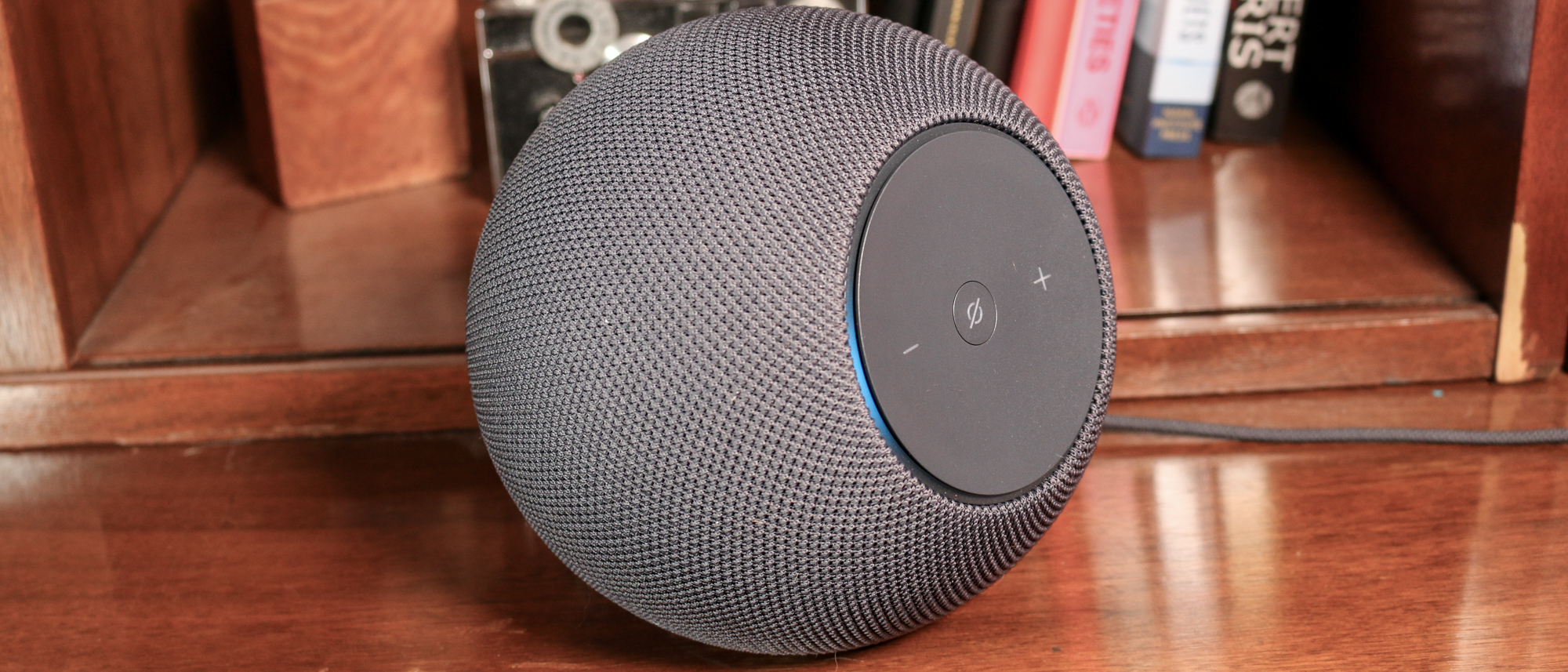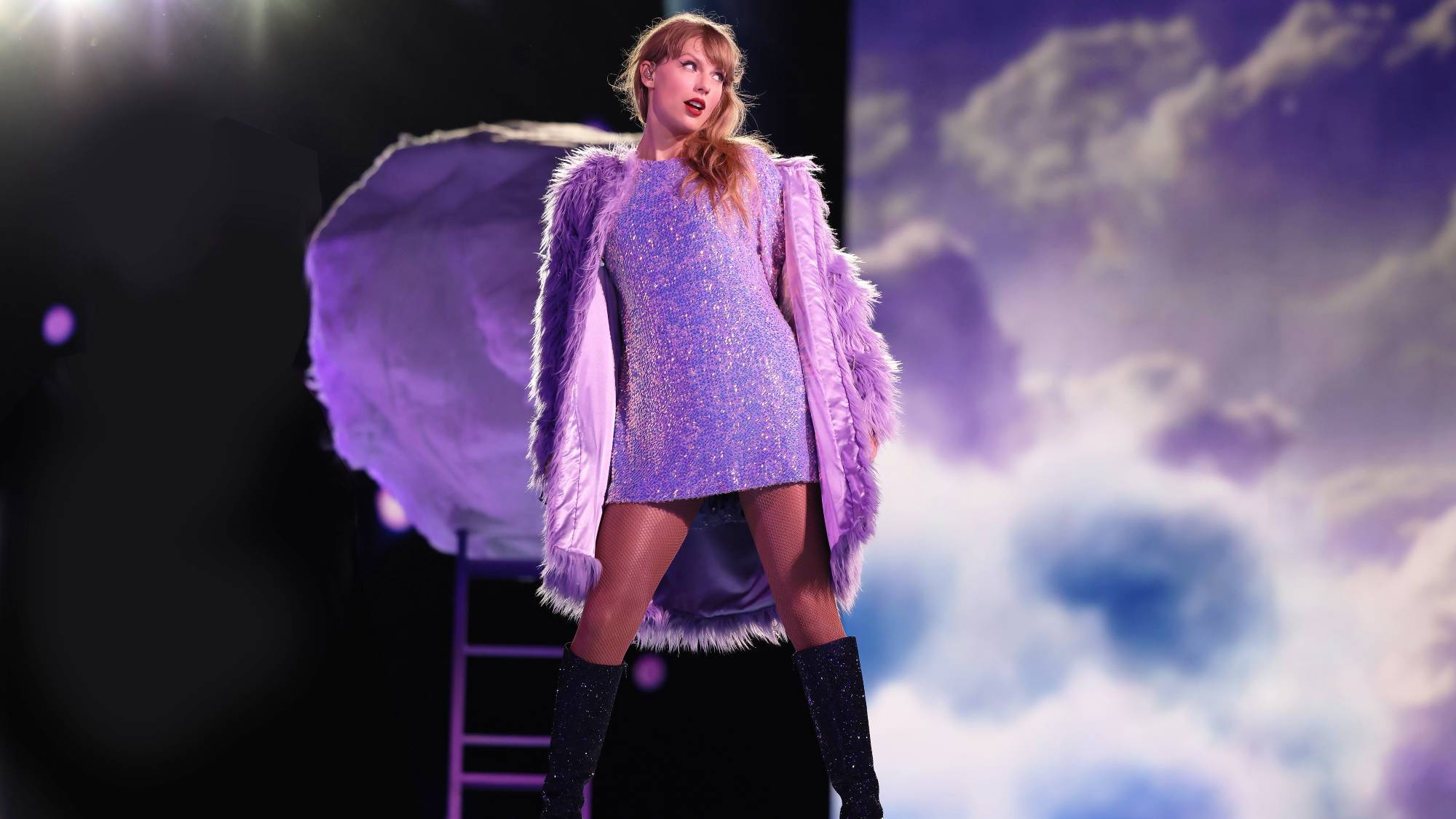Tom's Guide Verdict
With booming bass, spatial audio, and Alexa+, the Echo Studio is the best smart speaker for an Amazon-centric home theater system and smart home, but those focused more on audio quality will still prefer the Sonos Era 100.
Pros
- +
More compact design than older Echo Studio
- +
Pumps out a lot of bass for the size
- +
Alexa+ much improved over Alexa
- +
Works as speaker for Fire TV devices
Cons
- -
No optical audio port
- -
Sound not as defined as Sonos Era 100
Why you can trust Tom's Guide
Size: 6.1 x 5.6 x 5.8 inches
Speakers: 1x 3.75-inch woofer, 3x 1.5” full-range drivers
Wireless: Wi-Fi 6E 11a/b/g/n/ac/ax, Bluetooth LE 5.3
Smart Home: Zigbee, Matter, Thread Border Router, eero
Six years is a long time to wait. Of all its smart speakers, Amazon’s premium device, the Echo Studio, has gone the longest without an update. First released in 2019, the Echo Studio was designed to compete with the Sonos One, Apple HomePod, and Google Home Max. Since that time, the first two of those devices have been updated, and the latter has been discontinued.
So what does half a dozen years of development get you? For starters, a new design: The 2025 Echo Studio has adopted the same orb-like shape as Amazon’s other smart speakers. And, it has a slew of smart home features, like the ability to act as an eero Wi-Fi satellite, as well as temperature and presence sensors.
Most significantly, it’s also designed to work with Alexa+, Amazon’s AI-boosted smart assistant. While not exclusive — Alexa+ will also work on the original Echo Studio — the 2025 model has an upgraded processor to deliver faster performance.
So how does the 2025 Echo Studio compare to the best smart speakers? I’ve been testing it to find out.
Amazon Echo Studio (2025): Price & availability
The Echo Studio will be available for sale on Nov, 2025, for $219. You’ll be able to get it in white or black.
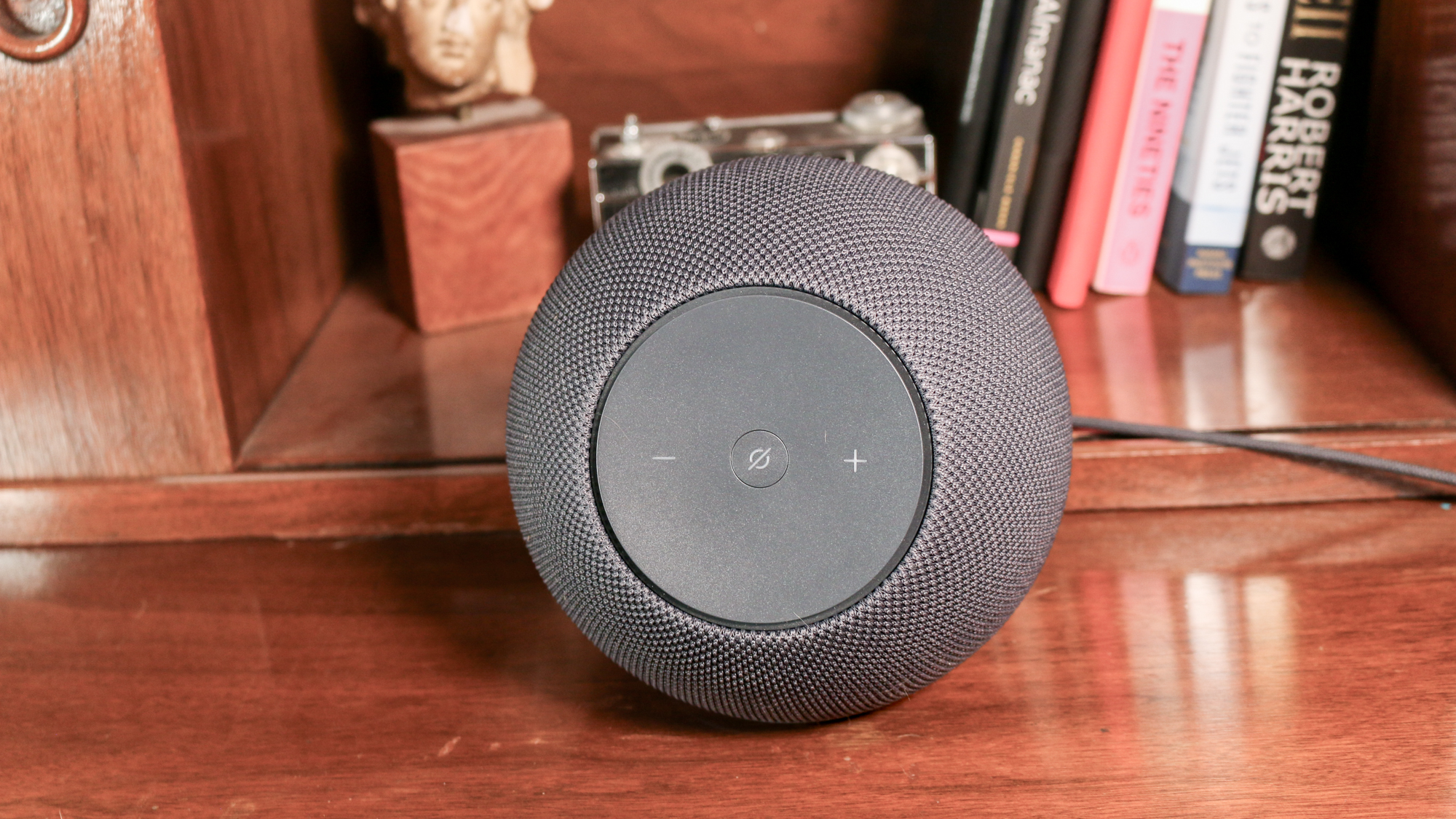
The Echo Studio’s price is the same as the Sonos Era 100, another one of our favorite smart speakers, so you’ll be seeing a lot of comparisons between the two throughout my review.
Amazon Echo Studio (2025) review: Design
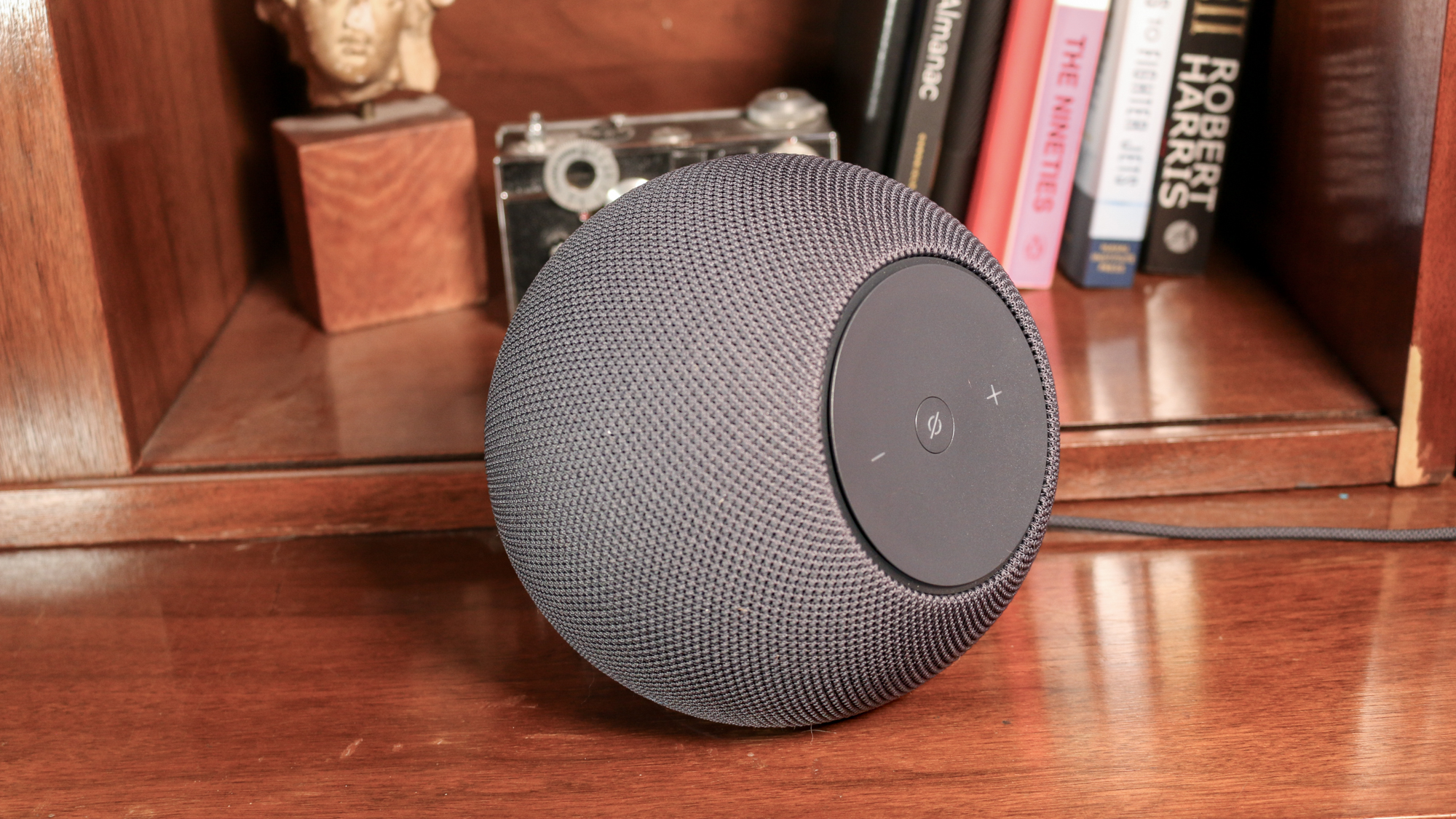
Where the original Echo Studio had a canister-like design similar to the Apple HomePod, the 2025 version of the Echo Studio looks like a larger version of the Echo Dot Max. It’s a spherical device, with a large circular indentation in the front for the volume controls. Ringing these controls is an array of LEDs that change to blue when Alexa+ is engaged. Measuring 6.1 x 5.6 x 5.8 inches, the Echo Studio feels like an oversized Magic 8 Ball, and is a substantial 3.6 pounds.
Get instant access to breaking news, the hottest reviews, great deals and helpful tips.
Wrapping the Echo Studio is an acoustic fabric that’s remarkably similar to that on the Apple HomePod mini. Unlike the original Echo Studio and the Sonos Era 100, the latest Echo Studio lacks an optical audio-in port, so you can’t hook it up directly to one of the best record players, for instance. It does have a screw mount in the bottom, though, so you can hook it up to wall mounts.
Amazon Echo Studio (2025) review: Audio quality
While I generally liked the original Echo Studio, which launched in 2019, it ultimately didn’t sound nearly as good as the Sonos One nor the Apple HomePod; it got plenty loud, but mids tended to get lost in the shuffle.
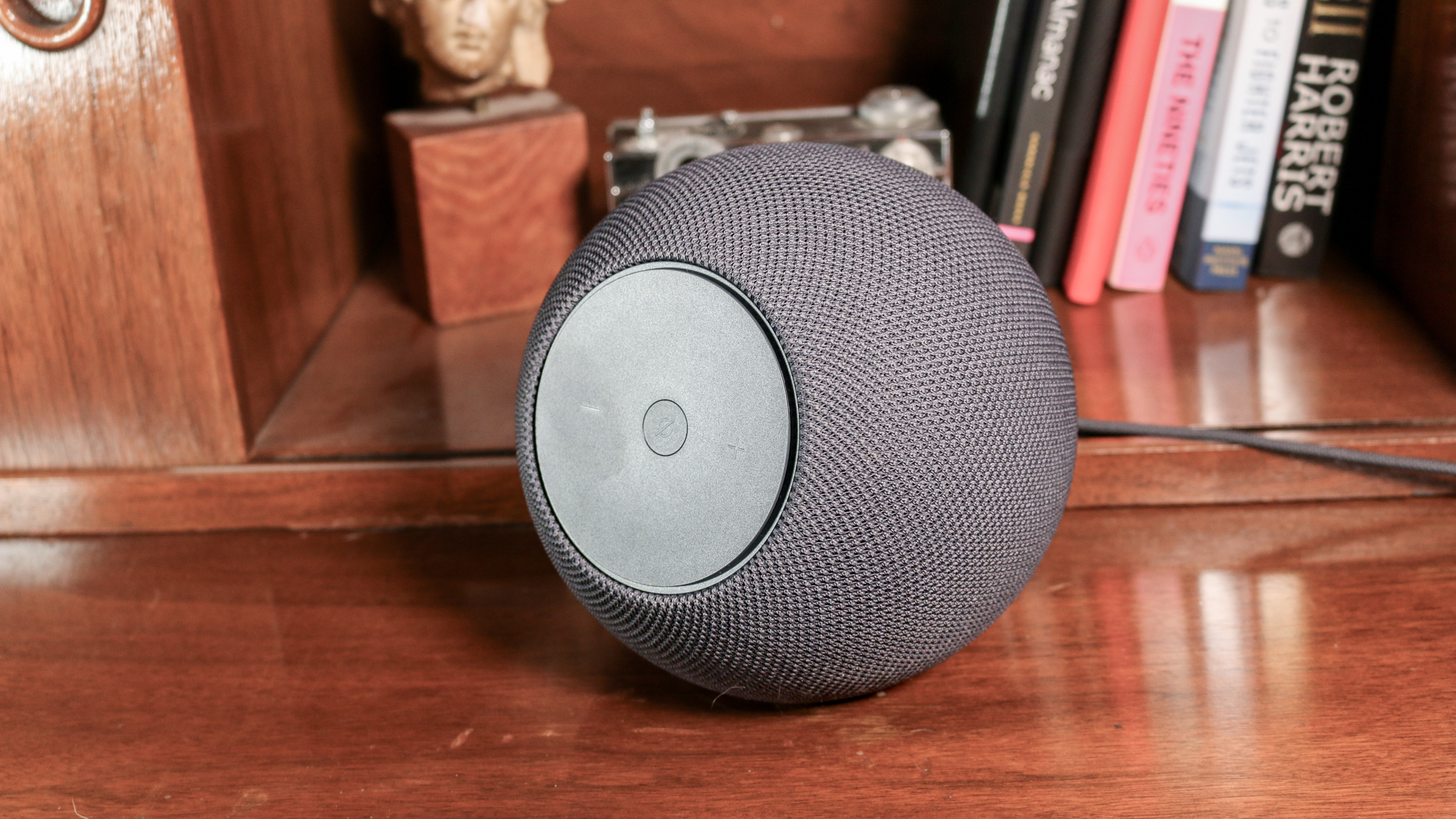
The same holds true for the 2025 version. While it delivers plenty of chest-thumping bass and quality audio, it falls short of the Sonos Era 100, specifically when it comes to vocals.
The original Echo Studio featured a 5.25-inch woofer, three 2-inch midrange speakers and one 1-inch tweeter. By comparison, the 2025 version has a single 3.75-inch high excursion woofer and three 1.5-inch full-range drivers.
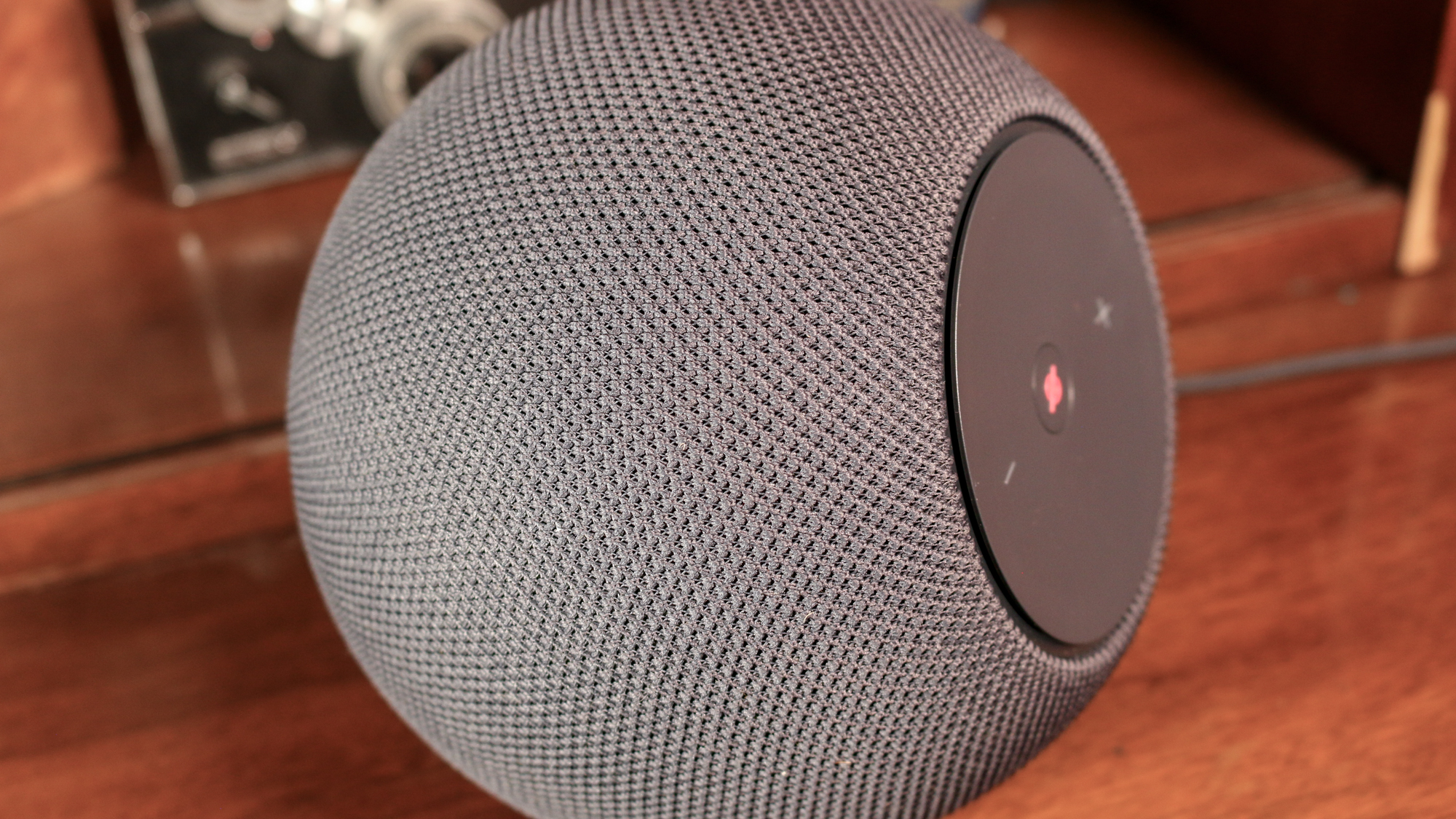
Even with the smaller woofer, the Echo Studio was able to drive an impressive amount of bass, enough so that I felt it from across my living room. Everything from Rihanna’s “SOS” to Stevie Wonder’s “Superstition” was able to send small tremors through the floor to my feet. If you want to get the party started, this is the speaker for you.
However, when listening more closely to a variety of tracks, I found that the Echo Studio didn’t fare as well when it came to vocals. Norah Jones’ “Don’t know why” sounded great on the Studio, with lots of space around the instruments, but on the Era 100, everything felt a bit warmer, and her vocals were a bit more forward and captured more of that ephemeral quality to her voice.
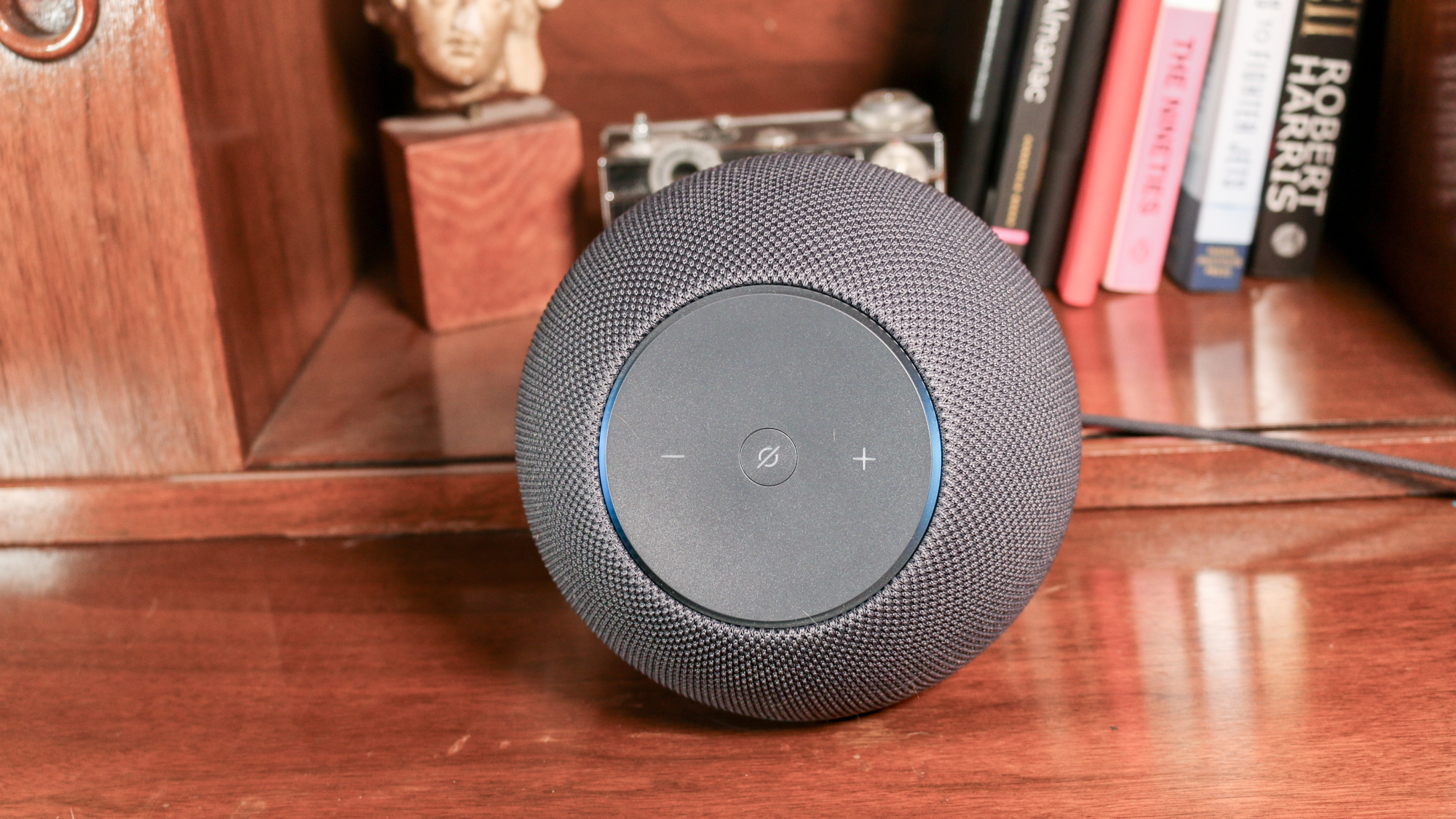
Similarly, while the Echo Studio was able to make K-Pop Demon Hunters' “Golden” really bump with its driving bass, the Sonos Era 100 did a better job at bringing out EJAE’s soaring voice.
While not available at launch — Amazon said it would come in November — the Echo Dot Max can be used as an output device if you have a Fire TV Stick 4K Max (2nd Gen), Fire TV Stick 4K (2nd Gen), or Fire TV Cube (3rd Gen).
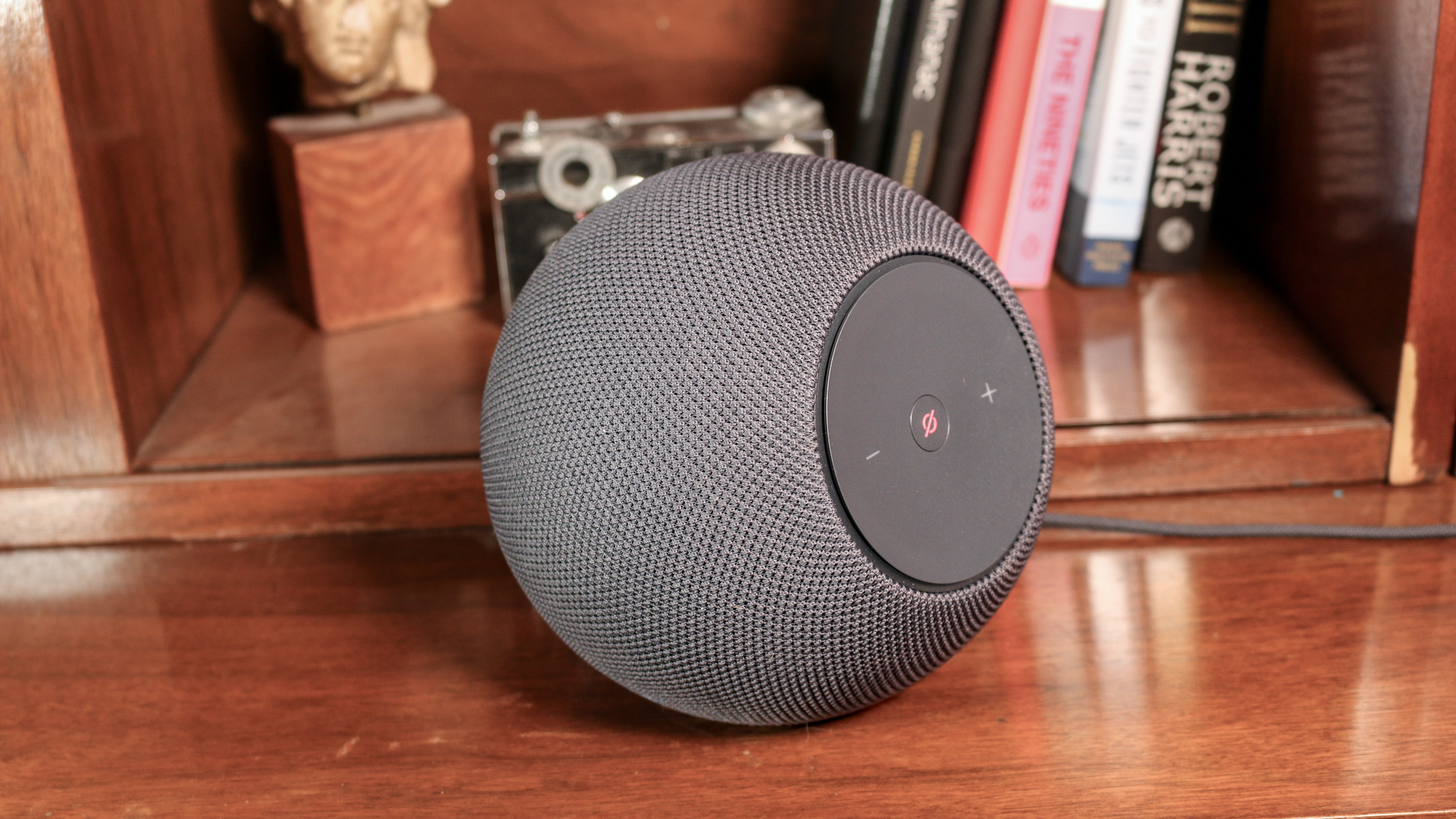
It’s similar to what Apple offers with the HomePod and HomePod mini with Apple TV, and what you can do with older Echo smart speakers and Fire TV devices. However, unlike the older Echo devices, where you were limited to pairing two, you’ll be able to link up to five Echo Dot Max and Echo Studios to create an ad hoc home theater with true surround sound.
Finally, the Echo Studio has spatial audio (something the Era 100 lacks), so it can play Dolby Atmos tracks, making it even more suited for your home theater setup.
Amazon Echo Studio (2025) review: Alexa+
While I cover this in greater detail in my Echo Dot Max review, Amazon’s voice assistant is much improved over the original. It speaks to you in a much more natural, conversational tone, and is better at interpreting your commands, especially when it comes to the smart home.
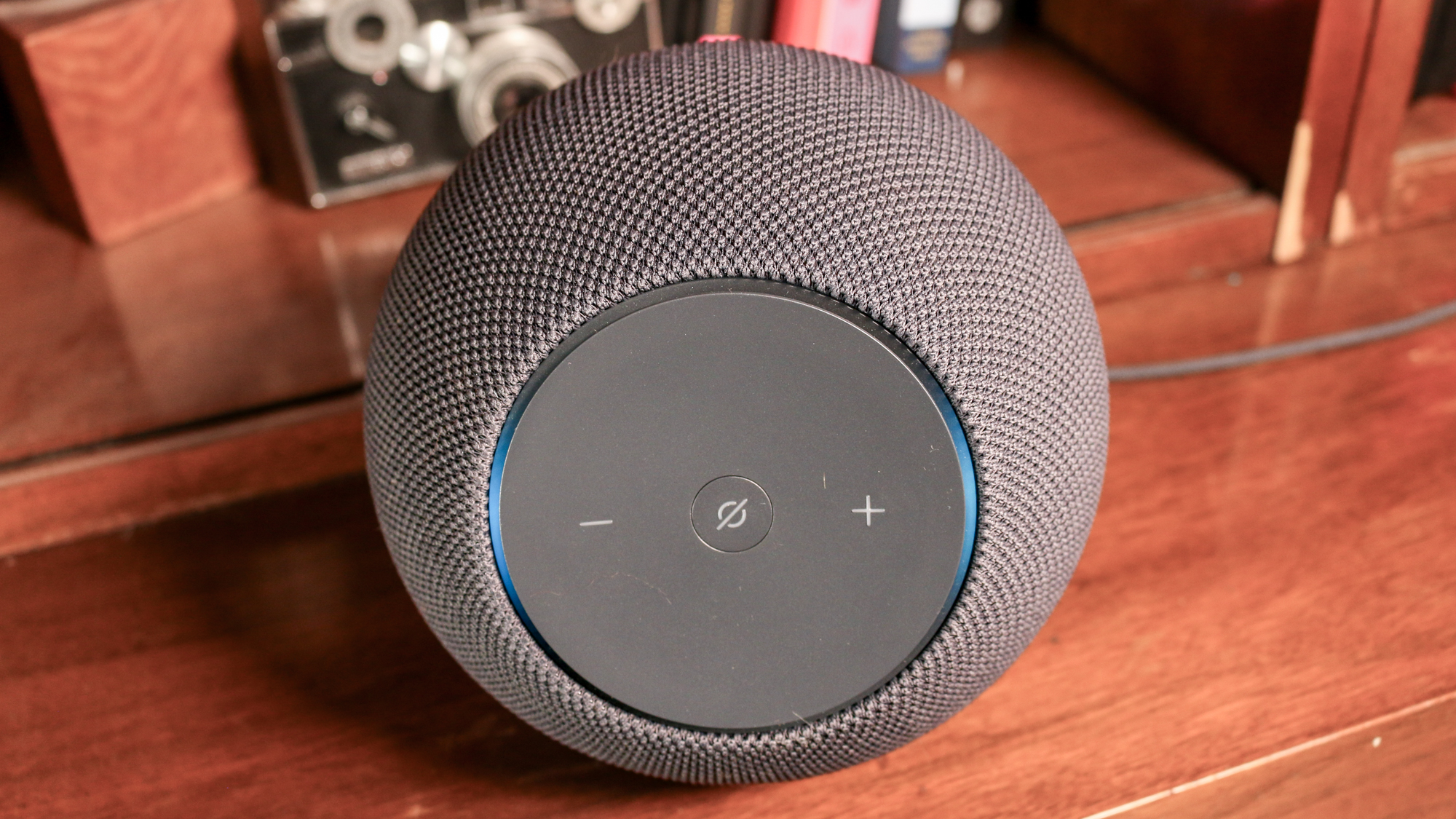
As someone who has way too many smart home devices in his house, I’m frequently naming things too similarly — I have a lot of things that are either called “living room lights or “family room lights,” for instance. In the past, getting Alexa to turn on the appropriate device would sometimes be a cause for frustration as it struggled to identify just what I wanted it to do.
Now, it’s much smarter at figuring out my intentions, to the point where it was a cinch to tell it to create a routine based on a variety of factors — such as turning on the lights if someone was in a room, but only after 9 p.m. — or simply by saying “turn the lights on in this room.”
Amazon Echo Studio (2025) review: Smart home
Of course, a smart speaker is about more than just cranking out music. Like the Echo Dot Max, the Echo Studio has an eero satellite, so if you have an eero mesh router, this can be a good way to fill gaps in your coverage. It’s not overly powerful (you only get speeds of up to 100 Mbps), but can help in a pinch.
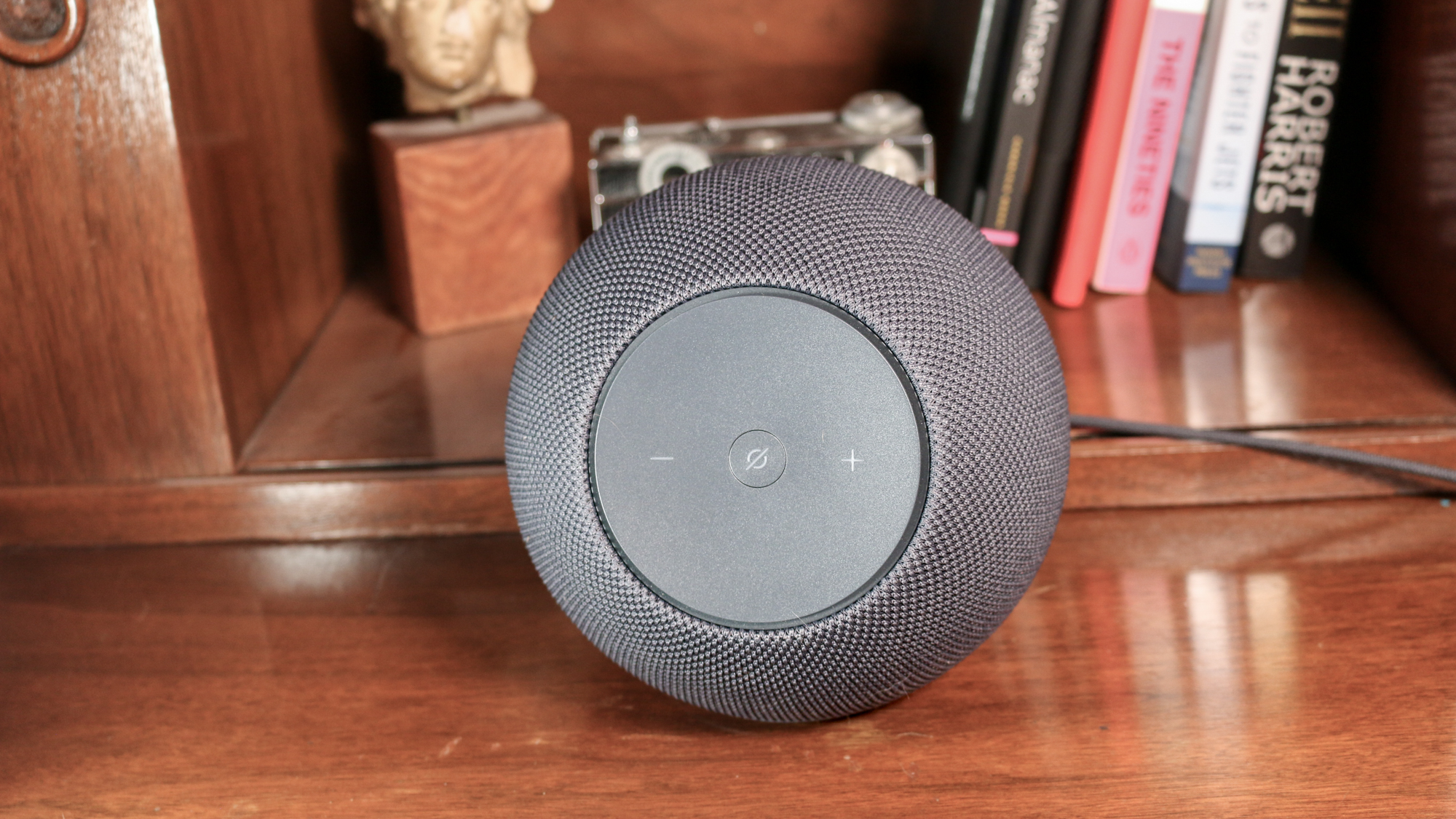
In addition, the Echo Studio has an ambient temperature sensor, an ambient light sensor and presence Detection, which can all be used as triggers for smart home routines. So, you could tell Alexa+ to create a routine where it turns on the Echo Studio and your lights if you happen to walk into the room.
Amazon Echo Studio (2025) review: Bottom line
If you’re looking for the best smart speaker around $200, and audio is your primary focus, then the Sonos Era 100 is still your best bet. Not only did it edge out the Studio in my listening test, but it also has an optical audio port, so you can use it with older audio devices like turntables that don’t have Wi-Fi or Bluetooth. And, while Sonos did not do itself any favors with its app redesign last year, things have improved.
However, the Amazon Echo Studio is a far more capable smart home device. Its suite of temperature and presence sensors let you better integrate it into smart home routines, and, if you have a newish Fire TV device, you can use the Studio as an ad hoc soundbar — something you can’t really do with the Era 100.
Then there’s Alexa+, which is currently only available on Amazon’s smart speakers. From my testing, Amazon’s AI-powered voice assistant is far better than the original; while I don’t think it’s worth upgrading to the Echo Studio just for this feature, it is a nice benefit.

Michael A. Prospero is the U.S. Editor-in-Chief for Tom’s Guide. He oversees all evergreen content and oversees the Homes, Smart Home, and Fitness/Wearables categories for the site. In his spare time, he also tests out the latest drones, electric scooters, and smart home gadgets, such as video doorbells. Before his tenure at Tom's Guide, he was the Reviews Editor for Laptop Magazine, a reporter at Fast Company, the Times of Trenton, and, many eons back, an intern at George magazine. He received his undergraduate degree from Boston College, where he worked on the campus newspaper The Heights, and then attended the Columbia University school of Journalism. When he’s not testing out the latest running watch, electric scooter, or skiing or training for a marathon, he’s probably using the latest sous vide machine, smoker, or pizza oven, to the delight — or chagrin — of his family.
You must confirm your public display name before commenting
Please logout and then login again, you will then be prompted to enter your display name.
